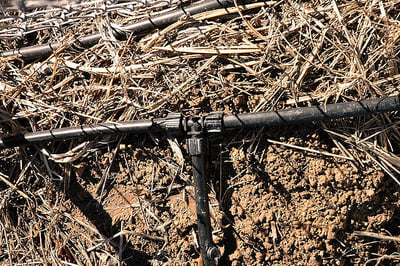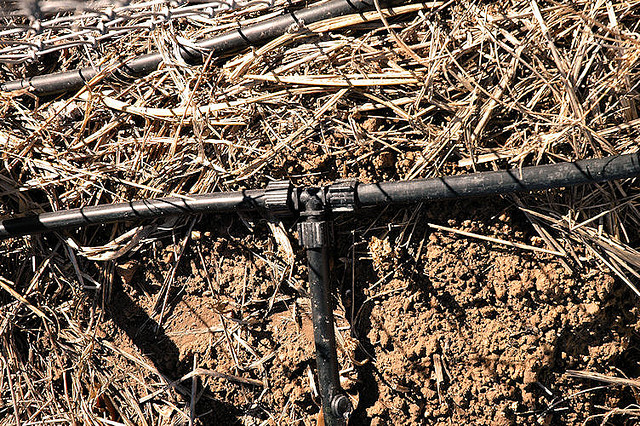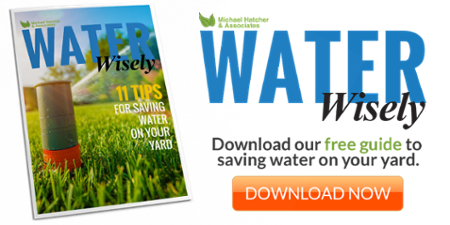Water efficiency is on many people’s minds, especially during the hot days of summer. Using less water not only helps save you money on your monthly water bill, but it helps preserve our aquifers and water quality as well.
In response to the demand for water efficiency, the landscape industry has come up with many water saving irrigation solutions, including smart controllers and pressure regulated sprinkler heads.
One of these solutions is drip irrigation, a type of irrigation system that delivers water in a slow trickle, or drip, near or under the ground rather than spraying it through the air. While this type of irrigation is not appropriate for green spaces, many people are during the drip for their flower beds, shrubs and trees.
But is drip irrigation more efficient? And if so, is it efficient enough to make up for the added cost of installing it?
We will answer these questions by taking a closer look at the advantages and disadvantages of drip irrigation.
How Does Drip Irrigation Work?
A drip irrigation system delivers water directly to the root of a plant, which is where the plant takes water in.
Drip irrigation is installed below ground and its center drip emitters can come in two different sizes, 12” or 18”.
Keep in mind that this type of irrigation is only appropriate to use when the soil conditions are right or when living in a windy location.
While drip isn’t ideal for clay soil, it can also be customized for your container plants. Our team can run a line off of your sprinkler system and set up automatic watering for pots on a patio or porch.
Other Reasons to Consider Drip Irrigation
 When using drip irrigation, water is delivered at a much lower pressure than required by sprinkler systems. Because of this pressure, drip can reduce erosion in certain situations.
When using drip irrigation, water is delivered at a much lower pressure than required by sprinkler systems. Because of this pressure, drip can reduce erosion in certain situations.
Drip is also healthier for your plants. Watering the leaves of your flowers, including roses, can cause them to drop buds. It can also create the ideal conditions for blackspot and other fungal plant diseases.
This type of irrigation helps minimize wasted water in the event of a leak as well as prevents over spraying and, in turn, staining structures and pavement.
What Does It Take to Maintain a Drip Irrigation System?
Drip irrigation systems are not necessarily more fragile or require a lot more maintenance than traditional sprinkler systems. This type of system, however, does have its shortcomings.
From a maintenance standpoint, drip irrigation does require care if you plan to go in and replant in the area where lines have already been installed. It’s easy to accidentally cut or poke holes in the lines with your shovel or tiller.
On the other hand, however, the soil tends to protect the underground lines from weather-related damage. With regular maintenance, such as flushing the system at the beginning of the irrigation season, your drip irrigation system should last a good 10 to 15 years.
Is Drip Irrigation Really More Efficient?
Drip irrigation is measured in gallons per hour, rather than gallons per minute.
While exact usage rates vary by the system, it’s safe to say that a landscape currently being serviced with a spray type sprinkler system using 20-30 gallons per minute could very well be replaced with a drip system that uses just 10 gallons per hour.
In other words, drip irrigation typically cuts water use by at least 50%, making is a more water efficient choice. For many, however, the real question is whether drip irrigation is also more cost efficient.
Drip is not an inexpensive alternative to regular irrigation. In fact, this type of irrigation costs about 20-30% more to install than a conventional sprinkler system. At the same time, however, it saves money in the long run in regards to water cost.
Considering Drip Irrigation?
The question of whether or not to install a drip irrigation system can best be answered with a free consultation from one of our experienced landscape designers at Michael Hatcher & Associates.
If you are interested in scheduling this consultation, please contact us online or call us at (901) 755-3207. We will be glad to help you decide whether drip irrigation is the right choice for you and, if so, how best to install it on your property.
Image Credit: Drip Irrigation




